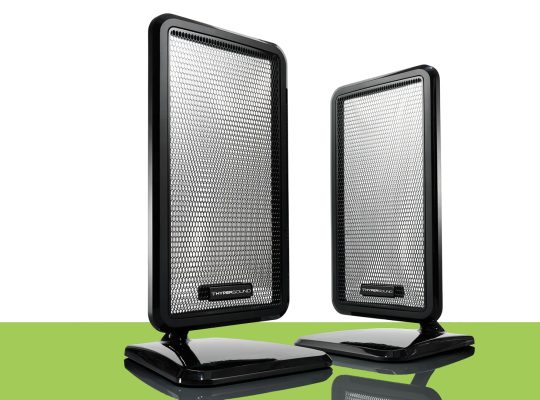A bridge angle tumor is a relatively rare but serious condition that can affect balance and hearing. This type of tumor, also known as a vestibular schwannoma or acoustic neuroma, usually develops in the corner between the brainstem and cerebellum, an area called the bridge angle. The tumor grows from Schwann cells, which are responsible for myelin formation around the nerves. In this article, we will discuss exactly what a bridge angle tumor is, what symptoms are associated with it, how it is diagnosed, and what treatment options are available.
The Anatomy of the Bridge Corner
To understand what a bridge angle tumor is, it is important to know the anatomy of the bridge angle. The bridge angle is a narrow area in the skull, located at the base of the brain, where the nerves of hearing and balance, as well as the facial nerve, converge. These nerves play a crucial role in hearing, balance and movement of muscles in the face. Because these nerves are close together, a tumor in this area can affect various neurological functions.
What is a Bridge angle tumor?
A bridge angle tumor is a benign (non-cancerous) tumor that usually grows slowly. The most common type of bridge angle tumor is the vestibular schwannoma, which arises from the Schwann cells of the eighth cranial nerve, also called the vestibulocochlear nerve. This nerve is responsible for hearing and balance. Although the tumor is benign, it can cause significant damage by exerting pressure on nearby brain structures.
Causes and Risk Factors
The exact cause of a bridge angle tumor is not yet fully known. In some cases, the tumor may be associated with genetic conditions such as neurofibromatosis type 2 (NF2), a rare inherited disorder that promotes the growth of tumors along nerves in the central nervous system. In most cases, however, the tumor occurs sporadically, with no known cause.
Although bridge angle tumors can occur in anyone, they are usually found in adults between the ages of 30 and 60. There appears to be no association with lifestyle choices such as smoking or diet.
Symptoms of a Bridge angle tumor
The symptoms of a bridge angle tumor often develop slowly, as the tumor grows over a long period of time. Initial symptoms are usually subtle and can be easily overlooked. Common symptoms include:
- Hearing loss: The most common initial symptom is unilateral hearing loss, which means that hearing on one side declines. This can range from mild to severe and usually occurs gradually.
- Tinnitus: Another common symptom is tinnitus, also known as tinnitus. This is a persistent sound in the ear that only the patient can hear.
- Balance problems: Because the tumor affects the balance nerve, patients may also experience dizziness, a feeling of imbalance or vertigo.
- Facial problems: In some cases, the tumor can put pressure on the facial nerve, leading to muscle weakness or paralysis on one side of the face.
- Headache: Headaches may occur as a result of the pressure the tumor exerts on surrounding brain structures.
Diagnosis of a Bridge angle tumor
Diagnosing a bridge angle tumor usually begins with a thorough medical history and physical examination, in which the doctor watches for symptoms such as hearing loss and balance problems. If a bridge angle tumor is suspected, several diagnostic tests are often performed, including:
- Audiometry: A hearing test to determine the type and degree of hearing loss.
- MRI scan: An MRI (Magnetic Resonance Imaging) is the most reliable method of detecting a bridge angle tumor. It provides detailed images of the brain and can detect even small tumors.
- CT scan: A CT scan may be used in some cases, especially if an MRI is not available. A CT scan can help identify bone abnormalities and the location of the tumor.
Treatment options for a Bridge angle tumor
Treatment of a bridge angle tumor depends on several factors, including the size and growth of the tumor, the patient’s age and health, and the severity of symptoms. The main treatment options are:
- Wait and Observe: For small tumors that do not cause significant symptoms, a wait-and-see policy may be chosen. This involves monitoring the tumor regularly with MRI scans to see if it is growing.
- Surgery: For larger tumors or tumors that cause severe symptoms, surgical removal may be necessary. Various surgical techniques are available, depending on the location and size of the tumor.
- Radiation therapy: In some cases, stereotactic radiosurgery, such as the Gamma Knife or CyberKnife, can be used to treat the tumor. This is a non-invasive procedure that uses targeted radiation to stop the growth of the tumor.
- Cochlear Implants: When hearing loss occurs, cochlear implants or other hearing aids can help improve hearing.
Living with a Bridge Angle Tumor
Life with a bridge angle tumor can be challenging, especially since symptoms can gradually worsen. Early diagnosis and treatment are crucial to prevent complications and maintain quality of life. Patients undergoing treatment may also need rehabilitation therapy to improve their balance and hearing.
Psychological support and participation in support groups can also be valuable for patients and their families. Because a bridge angle tumor is rare, it can be helpful to connect with others who have had similar experiences.
Conclusion
A bridge angle tumor is a rare but treatable condition that can have a significant impact on hearing, balance and overall quality of life. Early detection and a proper treatment plan are essential to minimize the impact of this condition. If you experience symptoms such as hearing loss or balance problems, it is important to seek medical advice. With proper care and treatment, it is possible to effectively manage the challenges of a bridge angle tumor and maintain a good quality of life.







